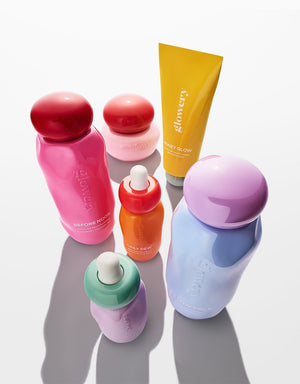MY SCREEN TIME IS UP,
and so is my texture.
By Lucas, the guy next door
I thought my skin was freaking out for no reason. Turns out, it was just keeping up with my screen time. Between late-night scrolling, work tabs, TikTok skincare tips I’ll never use, and constant notifications, my barrier was like, girl, enough. If your texture is acting up, your glow is glitching, and your face feels... tense? Same. Let’s talk about how to fix it : gently, and without deleting your entire life.

I was doing the most. My skin wanted the opposite.
Ironically, the more stressed I got, the more tempted I was to add things. A brightening mask. An exfoliating pad. A retinol I didn’t actually need that night. In my head, more products = more control.
But the truth is: your skin mirrors your pace. And mine was in sprint mode, even when I was “resting.” It didn’t need more. It needed less.
What screen stress actually does to your face ?
Let’s get nerdy for a second. When you spend hours a day in front of screens (hi, yes), your nervous system stays in a low-grade state of alert. You’re not in danger, but your body thinks you are. Which means more cortisol, more inflammation, more chances your skin will decide to randomly freak out over your lunch.
Add in blue light exposure (which can accelerate oxidative stress and dullness), eye strain, and the fact that screen time usually = more late nights and less sleep, and you’ve got a perfect storm for irritated, unbalanced, slightly sad skin.
So I changed my skincare, but also my expectations.
I didn’t overhaul my routine. I softened it.
I swapped foamy, intense cleansers for a gentle, jelly-textured one that felt like a cold compress for my brain. I brought in a hydrating toner and I gave myself permission to stop layering for performance, and start layering for calm.
Skincare tips that saved my glow:
- Use a cleanser that respects your barrier (no stripping = no revenge texture)
- Reintroduce fermented actives : they support your microbiome, which is your skin’s actual mood stabilizer
- Go slow on actives when you’re mentally overstimulated. Your brain isn’t the only thing that’s reactive.
- Choose textures that make you feel something soft : jelly, milk, cloud. Light to the touch, but effective in the long run.
I also stopped using skincare like a fix button.
Now when I notice new texture, I don’t immediately search “how to get rid of.” I ask myself: have I been resting? have I touched grass? have I disconnected, even for 10 minutes?
Because sometimes my skin isn’t asking for a product. It’s asking for me.
This isn’t about screen shame. It’s about skin clarity.
I still scroll. I still work late. I still let my TikTok algorithm convince me I need a new essence every week. But now I know what my skin is trying to tell me when the texture shows up: slow down.
And when I do, I swear it thanks me.With bounce. With glow.
With that feeling of seeing yourself in the mirror and thinking: you’re back.
Your skin isn’t tired, it’s overstimulated guys !
We don’t often talk about this, but screen time doesn’t just exhaust your brain, it can disrupt your skin’s ability to recover.
Here’s how:
> Your nervous system stays “on” when you're switching between apps, scrolling at night, or multitasking. That constant low-level stress affects your skin's ability to regulate oil, retain moisture, and heal micro-inflammation.
> Your skin reads that stress like a signal, and reacts with dullness, texture, and inflammation.
> Add disrupted sleep (from blue light or mental overload), and your skin literally doesn’t get the downtime it needs to reset overnight.
> Key takeaway: If your texture is creeping in and your products “suddenly stop working,” the issue isn’t your skincare, it’s your rhythm !!! Your skin thrives on recovery. Not stimulation. A 3-product routine after 10 minutes off-screen might do more than a 7-step one while doomscrolling.











